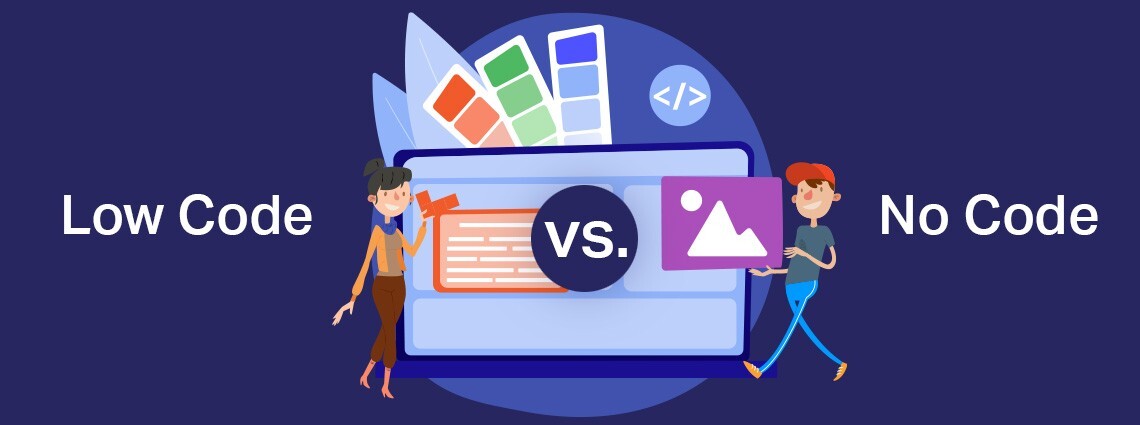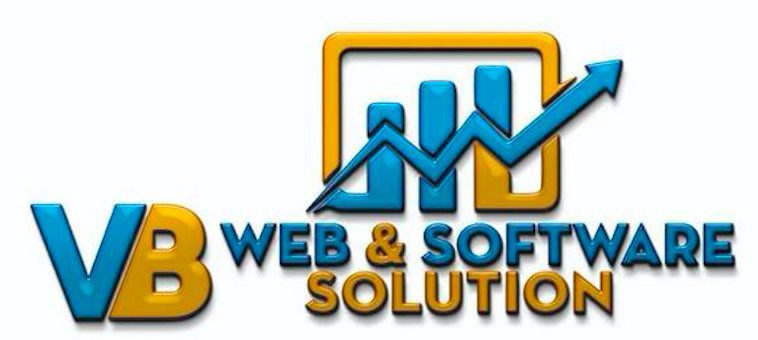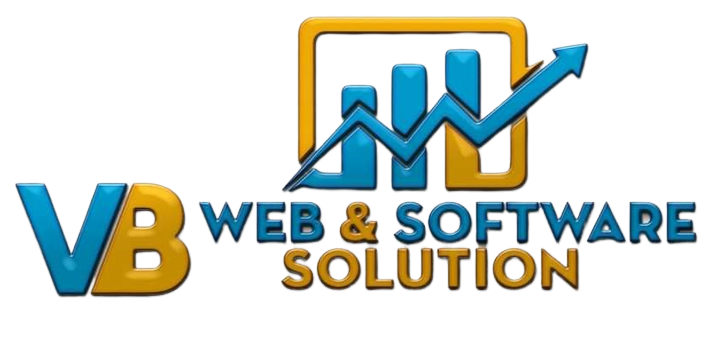In recent years, the rise of low-code and no-code platforms has revolutionized the way websites and web applications are built. These platforms empower individuals and businesses to create functional, professional-grade websites without the need for extensive coding knowledge or technical expertise. By offering drag-and-drop interfaces, pre-built templates, and automated workflows, low-code and no-code platforms’s are democratizing web development and making it accessible to a broader audience.
As we move further into 2025, the adoption of low-code and no-code platforms is accelerating, offering new possibilities for efficiency, creativity, and innovation. In this article, we’ll explore the role of these platforms in modern web development, their key benefits, and why businesses should consider embracing this technology.
What are Low-Code and No-Code Platforms?
Low-Code Platforms
Low-code platforms provide a visual development environment where users can create applications with minimal hand-coding. These platforms typically include drag-and-drop tools, pre-built components, and integrations with third-party services.
- Target Audience: Developers and IT professionals looking to accelerate development.
- Examples: OutSystems, Mendix, Microsoft Power Apps.
No-Code Platforms
No-code platforms take simplicity a step further by allowing users to build applications without writing any code at all. These platforms are designed for non-technical users, offering intuitive interfaces and pre-configured templates.
- Target Audience: Business users, entrepreneurs, and hobbyists.
- Examples: Wix, Webflow, Bubble.
Why are Low-Code and No-Code Platforms Important in [2025]?
1. Democratizing Web Development
Low-code and no-code platforms’s are breaking down barriers to entry, enabling individuals and small businesses to create websites and applications without hiring developers or learning to code.
2. Faster Development
These platforms significantly reduce development time by automating repetitive tasks and providing pre-built components. This allows businesses to bring their ideas to life quickly and efficiently.
3. Cost-Effectiveness
By eliminating the need for extensive coding and technical expertise, low-code and no-code platforms reduce development costs. Businesses can allocate resources more effectively and focus on growth.
4. Empowering Non-Technical Users
No-code platforms empower non-technical users to take control of their web development projects, fostering creativity and innovation.
5. Scalability
Many low-code and no-code platforms’s offer scalable solutions, allowing businesses to start small and expand as their needs grow.
Key Benefits of Low-Code and No-Code Platforms
1. Accessibility
Low-code and no-code platforms make web development accessible to a wider audience, including entrepreneurs, marketers, and small business owners.
2. Speed to Market
With pre-built templates and drag-and-drop tools, businesses can launch websites and applications faster than ever before.
3. Cost Savings
By reducing the need for custom coding and technical expertise, these platforms lower development costs and make web development more affordable.
4. Flexibility
Low-code and no-code platforms offer a wide range of customization options, allowing users to create unique and tailored solutions.
5. Collaboration
These platforms facilitate collaboration between technical and non-technical teams, enabling faster decision-making and problem-solving.
How Low-Code and No-Code Platforms’s are Shaping Web Development
1. Rapid Prototyping
Low-code and no-code platforms enable rapid prototyping, allowing businesses to test ideas and gather feedback before investing in full-scale development.
- Example: A startup can use Bubble to create a prototype of its app and validate the concept with users.
2. Citizen Development
No-code platforms empower citizen developers—non-technical users who create applications to solve business problems. This reduces the burden on IT teams and fosters innovation.
- Example: A marketing team can use Webflow to build a landing page for a new campaign without relying on developers.
3. Integration with Third-Party Services
Many low-code and no-code platforms offer integrations with popular third-party services, such as Google Workspace, Slack, and Stripe, enabling seamless workflows.
- Example: An e-commerce store can use Wix to integrate payment processing and inventory management.
4. Scalable Solutions
Low-code platforms like OutSystems and Mendix offer enterprise-grade solutions that can scale with your business, supporting complex workflows and large user bases.
- Example: A large corporation can use OutSystems to build a custom CRM system that integrates with existing tools.
Popular Low-Code and No-Code Platforms
1. Wix
- Type: No-code.
- Features: Drag-and-drop editor, pre-designed templates, e-commerce tools.
- Best For: Small businesses, portfolios, and personal websites.
2. Webflow
- Type: No-code.
- Features: Visual design tools, CMS, responsive design.
- Best For: Designers and marketers looking for creative control.
3. Bubble
- Type: No-code.
- Features: Custom workflows, database integration, API connections.
- Best For: Startups and entrepreneurs building web applications.
4. OutSystems
- Type: Low-code.
- Features: Enterprise-grade scalability, integrations, AI-assisted development.
- Best For: Large organizations and complex projects.
5. Microsoft Power Apps
- Type: Low-code.
- Features: Integration with Microsoft 365, AI Builder, pre-built templates.
- Best For: Businesses using Microsoft products.

How to Get Started with Low-Code and No-Code Platforms’s
1. Define Your Goals
What do you want to achieve with your website or application? Define your goals and requirements before choosing a platform.
2. Choose the Right Platform
Select a platform that aligns with your needs, budget, and technical expertise. Consider factors like ease of use, scalability, and integrations.
3. Explore Templates and Tools
Most platforms offer pre-built templates and drag-and-drop tools. Explore these resources to get started quickly.
4. Customize Your Design
Use the platform’s customization options to create a unique and tailored solution. Add your branding, content, and functionality.
5. Test and Launch
Thoroughly test your website or application before launching. Check for functionality, responsiveness, and performance.
6. Monitor and Optimize
After launching, monitor your website’s performance and gather user feedback. Make improvements and updates as needed.
Real-World Examples of Low-Code and No-Code Platforms’s in Action
1. Airbnb
Airbnb uses Webflow to create and manage marketing websites, enabling its team to quickly launch and update pages without relying on developers.
2. Coca-Cola
Coca-Cola uses Microsoft Power Apps to build internal tools and workflows, streamlining operations and improving efficiency.
3. Unqork
Unqork, a no-code platform, is used by enterprises like Goldman Sachs and Liberty Mutual to build complex applications without writing code.
Read More: The Role of API-First Development in Modern Web Development
Conclusion
Low-code and no-code platforms’s are transforming modern web development by making it faster, more accessible, and cost-effective. These platforms empower individuals and businesses to create professional-grade websites and applications without the need for extensive coding knowledge or technical expertise.
As we move further into 2025, the adoption of low-code and no-code platforms is expected to grow, offering new opportunities for innovation and efficiency. By embracing these platforms, businesses can stay ahead of the curve, reduce development costs, and bring their ideas to life quickly and effectively.
High-Authority External Links:
- Gartner’s Guide to Low-Code Development – A resource for understanding low-code platforms and their benefits.
- Webflow University – A comprehensive guide to learning Webflow and no-code web development.





